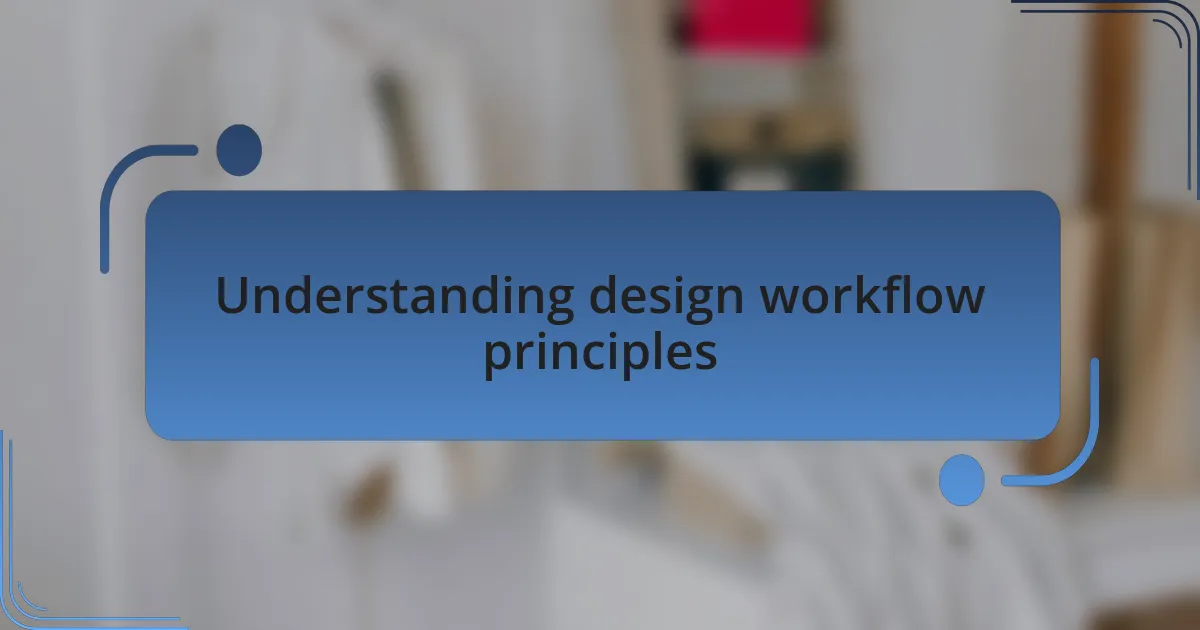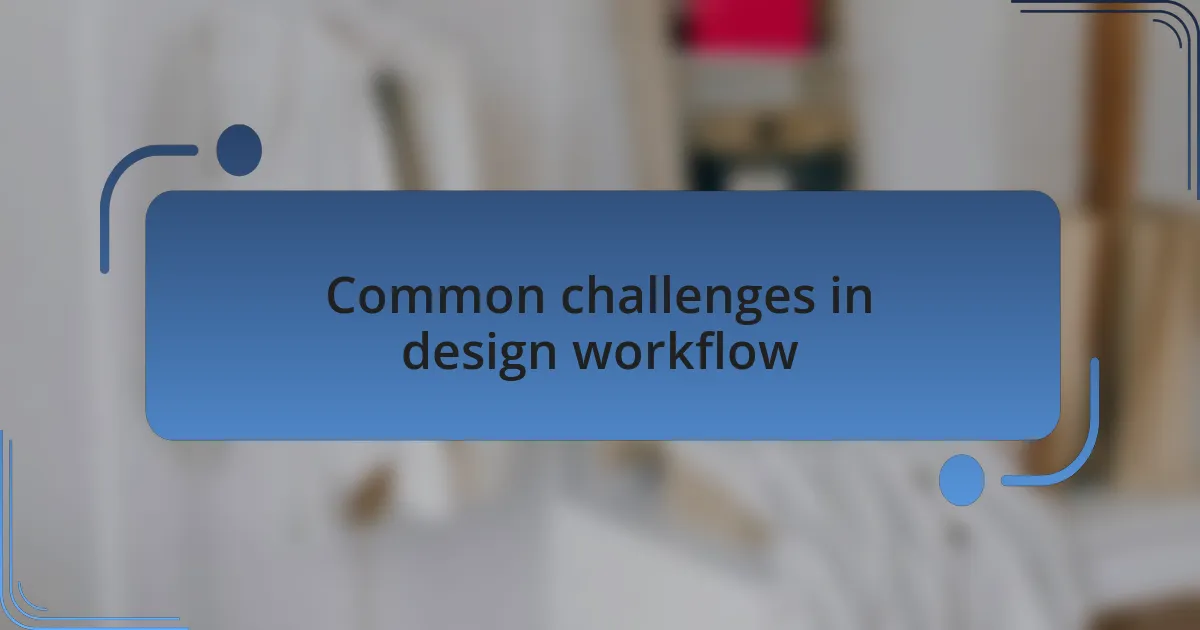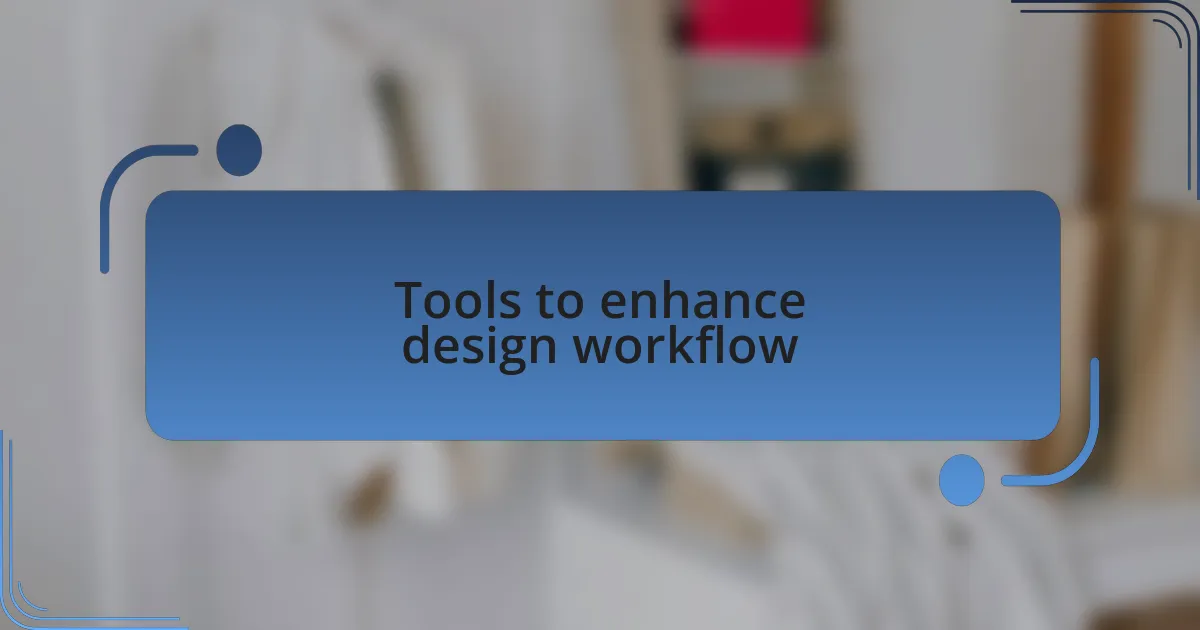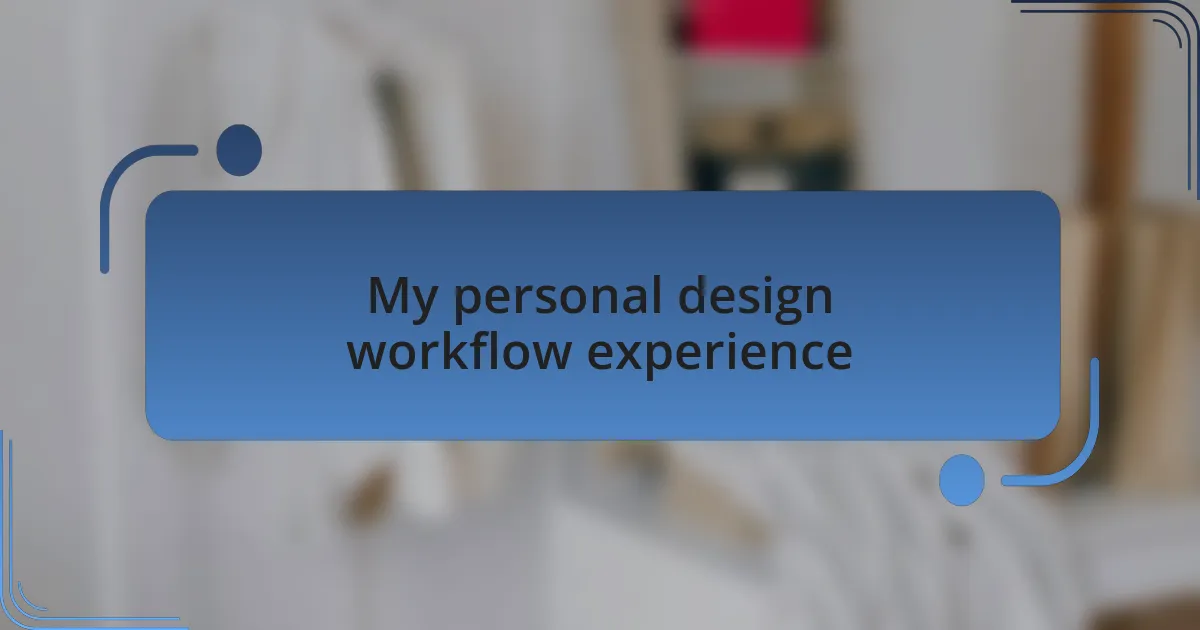Key takeaways:
- Understanding and organizing the design workflow into distinct phases (research, ideation, design, feedback) enhances clarity and creativity.
- Balancing flexibility and structure in workflows fosters inspiration while maintaining discipline.
- Effective communication and project management are crucial for managing client feedback and preventing burnout.
- Embracing iteration and actively seeking feedback at various stages of design leads to more refined and successful outcomes.

Understanding design workflow principles
Understanding design workflow principles is crucial to streamlining the creative process. I remember when I first faced chaotic project timelines, which left me feeling overwhelmed. By breaking my work into clear stages—research, ideation, design, and feedback—I found the clarity I desperately needed.
Each phase has its own purpose. For instance, research not only informs but inspires; it can evoke emotions and spark creativity. Have you ever felt stuck because you rushed into design without proper groundwork? I have, and it often led to frustration. When I took the time to dig deep into my audience’s needs, I discovered ideas that transformed my designs.
In my experience, balancing flexibility and structure in workflows is key. There were times I felt tethered to a strict schedule, limiting my creativity. However, when I learned to allow room for spontaneous inspiration while still adhering to key principles, my projects flourished. This blend of freedom and discipline is what makes the design process truly rewarding.

Common challenges in design workflow
In my journey as a designer, one challenge I’ve frequently encountered is managing feedback from clients and team members. It can sometimes feel like a never-ending cycle of revisions, where each piece of input leads to more adjustments. Have you ever opened a project file only to be met with a barrage of conflicting opinions? I certainly have, and navigating those waters taught me the importance of establishing clear communication channels from the outset.
Another obstacle is the risk of burnout. I’ve been there—working long hours to meet tight deadlines, only to find my creativity dwindling. It’s almost like trying to spark a fire with wet wood; no matter how hard I tried to push through, the quality of my work suffered. Learning to recognize when I need a break has been pivotal. Allocating time for self-care not only rejuvenates my spirit but enhances my productivity when I return to the drawing board.
Lastly, juggling multiple projects can lead to overwhelming stress. I remember a time when I had three significant design projects running simultaneously, which made prioritization a challenge. It felt like being pulled in five directions at once, and deadlines loomed like dark clouds. Developing a robust project management system has proven invaluable in such instances. By categorizing tasks based on urgency and importance, I can tackle my workload with a clearer head, ensuring that each project deserves the attention it deserves without sacrificing quality.

Tools to enhance design workflow
When it comes to enhancing my design workflow, I’ve found that tools like Figma and Sketch can be game-changers. They allow for real-time collaboration, so you don’t have to wait for hours just to get feedback. I remember a project where my team was spread across different time zones; relying on these platforms made it feel like we were all in the same room, speeding up the design process significantly.
I also can’t stress enough the importance of using project management tools like Trello or Asana. They help me prioritize tasks and keep track of deadlines without drowning in a sea of notes and emails. There was a time when I lost track of a crucial design element because everything was scattered. Now, having a centralized space for all my tasks means I can focus on being creative instead of searching for what I previously worked on.
Moreover, integrating plugins into these design tools has also made a difference in how swiftly I can produce high-quality work. For instance, using accessibility checkers within my design software has not only streamlined my workflow but also enhanced the inclusivity of my designs. Have you ever finished a project only to realize it didn’t cater to all users? I have, and it made me realize that a small change in my workflow could lead to a more thoughtful and effective design.

My personal design workflow experience
When I think about my design workflow, one key moment stands out. I used to dive straight into design, feeling overwhelmed with choices and tools, which often stalled my creativity. It wasn’t until I developed a habit of sketching ideas on paper first that I noticed a shift. This simple practice not only uncluttered my mind but also helped me visualize concepts before committing to screen—can you believe it took me that long to realize the power of old-school techniques?
Another change that transformed my approach was the way I solicit feedback. In my earlier projects, I hesitated to share my drafts too soon, worried about judgment. Now, I actively seek critique at different stages, embracing the vulnerability that comes with it. I vividly recall sharing an early version of a design and receiving constructive feedback that took it to a whole new level. This openness has strengthened my designs and fostered a sense of community among my peers.
Lastly, I learned to embrace iteration as a friend rather than a foe. Early in my career, I’d clung to my initial ideas, fearing any change would diminish my work. Gradually, I began to understand that great design rarely comes from a single draft. Through iterations, I’ve not only polished my work but also discovered new directions I hadn’t considered. Have you ever been surprised by how much your design can evolve? I have, and it’s exciting to see where that journey can lead.